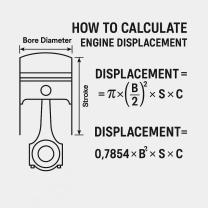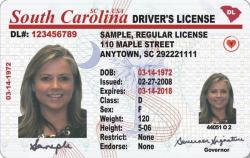How do I know which oxygen sensor to replace?
Determining which oxygen sensor to replace in your vehicle can be important for maintaining optimal engine performance and emissions control. Here are the steps to help you identify which oxygen sensor needs replacement:
Understand the Types of Oxygen Sensors: Modern vehicles are equipped with one or more oxygen sensors, and they can be categorized into two main types:
- Upstream (pre-catalytic converter): These sensors monitor the air-fuel mixture before it enters the catalytic converter.
- Downstream (post-catalytic converter): These sensors monitor the exhaust gases after they have passed through the catalytic converter.
Check for Diagnostic Trouble Codes (DTCs):
- Many vehicles have an onboard diagnostics system that can illuminate the "Check Engine" light and store DTCs related to sensor malfunctions. Use an OBD-II scanner to retrieve these codes.
- If you have a DTC related to an oxygen sensor, it will often specify which sensor (upstream or downstream) is causing the issue.
Consider Sensor Age and Mileage:
- Oxygen sensors can degrade over time and may need replacement due to wear and tear. If your vehicle has high mileage and the sensors have never been replaced, it may be a good idea to replace both the upstream and downstream sensors, especially if they are over 100,000 miles old.
Inspect for Physical Damage:
- Visually inspect the wiring and connectors for the oxygen sensors. Look for signs of damage, fraying, or corrosion. Faulty wiring or connectors can cause sensor malfunctions.
Use Freeze Frame Data:
- Some advanced OBD-II scanners can provide freeze frame data, which includes information about the vehicle's operating conditions at the time a DTC was set. This data can help you identify whether the issue occurred during engine warm-up (indicating an upstream sensor problem) or while driving (indicating a downstream sensor issue).
Consult the Repair Manual:
- Refer to your vehicle's repair manual or a reputable online source for specific information about the location and function of oxygen sensors in your vehicle. The manual may include diagrams and instructions for sensor identification and replacement.
Seek Professional Advice:
- If you are unsure about which oxygen sensor to replace or how to proceed, consider consulting a qualified mechanic or automotive technician. They can use specialized diagnostic tools and experience to pinpoint the issue accurately.
In summary, identifying which oxygen sensor to replace involves a combination of checking for diagnostic trouble codes, inspecting physical components, considering sensor age and mileage, and consulting vehicle-specific resources. Replacing the correct sensor is essential to ensure that your vehicle operates efficiently and meets emission standards.
Selecting the Right Oxygen Sensor: A Comprehensive Guide
Oxygen sensors are a critical component of a vehicle's emissions control system. They monitor the amount of oxygen in the exhaust gasses and send this information to the engine computer. The engine computer then uses this information to adjust the air-fuel mixture to ensure that the engine is running efficiently and cleanly.
There are two main types of oxygen sensors: upstream and downstream. Upstream oxygen sensors are located before the catalytic converter, while downstream oxygen sensors are located after the catalytic converter. Upstream oxygen sensors are responsible for monitoring the air-fuel mixture and providing feedback to the engine computer. Downstream oxygen sensors are responsible for monitoring the catalytic converter's efficiency.
When choosing an oxygen sensor, it is important to select the correct type and model for your vehicle. You can find this information in your vehicle's owner's manual or by contacting your local auto parts store.
Troubleshooting Oxygen Sensors: How to Identify the Faulty One
If you are experiencing problems with your vehicle, such as poor fuel economy, increased emissions, or a check engine light, it is possible that one of your oxygen sensors is faulty. There are a few ways to troubleshoot oxygen sensors:
- Check the check engine light. If your check engine light is on, it is possible that one of your oxygen sensors is faulty. You can use an OBD-II scanner to retrieve the trouble code and identify the faulty sensor.
- Inspect the oxygen sensors. Visually inspect the oxygen sensors for any signs of damage, such as cracks, corrosion, or loose wiring.
- Test the oxygen sensors. You can use a multimeter to test the voltage output of the oxygen sensors. The voltage output of an oxygen sensor should fluctuate between 0.1 volts and 0.9 volts.
If you are unsure of how to troubleshoot oxygen sensors, you can take your vehicle to a qualified mechanic.
DIY Oxygen Sensor Replacement: Tips for Success
Replacing an oxygen sensor is a relatively simple task that can be done at home with the proper tools and knowledge. Here are a few tips for success:
- Purchase the correct oxygen sensor. Make sure to purchase the correct type and model of oxygen sensor for your vehicle.
- Use the proper tools. You will need a wrench or socket to remove and install the oxygen sensor. You may also need a penetrating oil to loosen the sensor if it is stuck.
- Be careful not to overtighten the oxygen sensor. Overtightening the sensor can damage the threads and make it difficult to remove in the future.
- Clear the trouble code. After replacing the oxygen sensor, you will need to clear the trouble code from the engine computer. You can do this using an OBD-II scanner.
If you are unsure of how to replace an oxygen sensor, you can consult your vehicle's owner's manual or watch a tutorial video online.
By following these tips, you can select the right oxygen sensor for your vehicle, troubleshoot oxygen sensor problems, and replace an oxygen sensor yourself.












